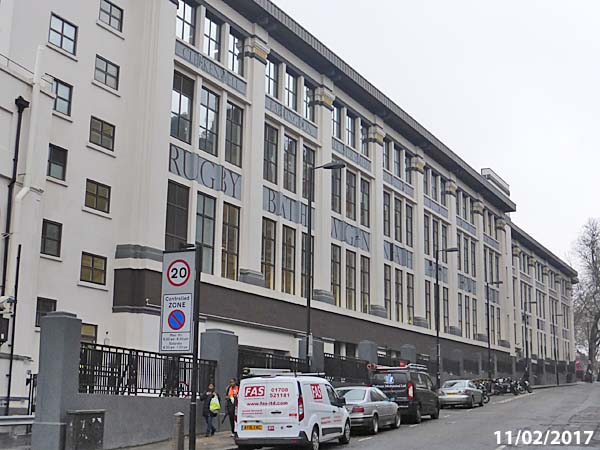Mount
Pleasant Sorting Office & Post Office, London

Architect
|
A. R. Myers
|
Date
Built
|
1925 - 1937
|
Location
|
Mount Pleasant
and Farringdon Road
|
Description
|
The Mount
Pleasant Postal Sortting Office and the
adjacent Post Office building are part of a 12
acre site in Clerkenwell that includes a huge
open yard for postal vehicles. The site
was once home to the Coldbath Fields Prison
that closed in 1885. The design of the
whole complex has been attributed to A. R.
Myers, a senior architect with the Office of
Works. The sorting office, shown above,
is essentially one very deep block that
presents its showier facade to Mount
Pleasant. The back of the building is
much plainer. Apparently it was built in
phases between 1925 and 1934. The "Post
Office", also known as the Public Stamp
Office, seen below, was built in 1937.

The british-history.ac.uk website explains
that, ".... To all appearances both
phases appear to be of reinforced
concrete, the Office of Works' favoured
medium for heavy-duty utility buildings
since the Edwardian period. That is so for
the eastern range (completed in late 1926
by the contractor Walter Jones & Sons
of Victoria Street). But despite its
similar elevation the larger western
portion, begun in 1929, was structured in
steel, the general contractor being J.
Gerrard & Sons Ltd., while the
steelwork was supplied by Edward Wood
& Co. Ltd, both contractors being from
Swinton, Manchester. The Depression
appears to have delayed this end of the
building, as the letter office was
completed only in 1934, being formally
opened in November that year by the Duke
and Duchess of York. Said at the
time of its construction to be the largest
in Europe or the British Empire, the
letter office was planned for partially
mechanized sorting and mail-handling, but
in its general arrangement was similar to
the Parcel Office, with large floors
overlooked by watching-galleries and
crow's nests. This was achieved with large
open areas and lantern-roofs. Bridges
containing mechanical conveyors linked the
buildings."

In recent years there have been discussions
about selling a portion of the site for
housing development. The plan has met
with considerable controversy and significan
opposition. An article on the Islington
Now website on March 19, 2013 claimed that, "
... The postal service hopes to build 683
homes on 55% of the 12-acre site, as well
as shops, offices, restaurants, and more
public space. If given the go-ahead by the
council, it would transform the area
surrounding Farringdon Road and Phoenix
Place."
|
Close
Window
|

